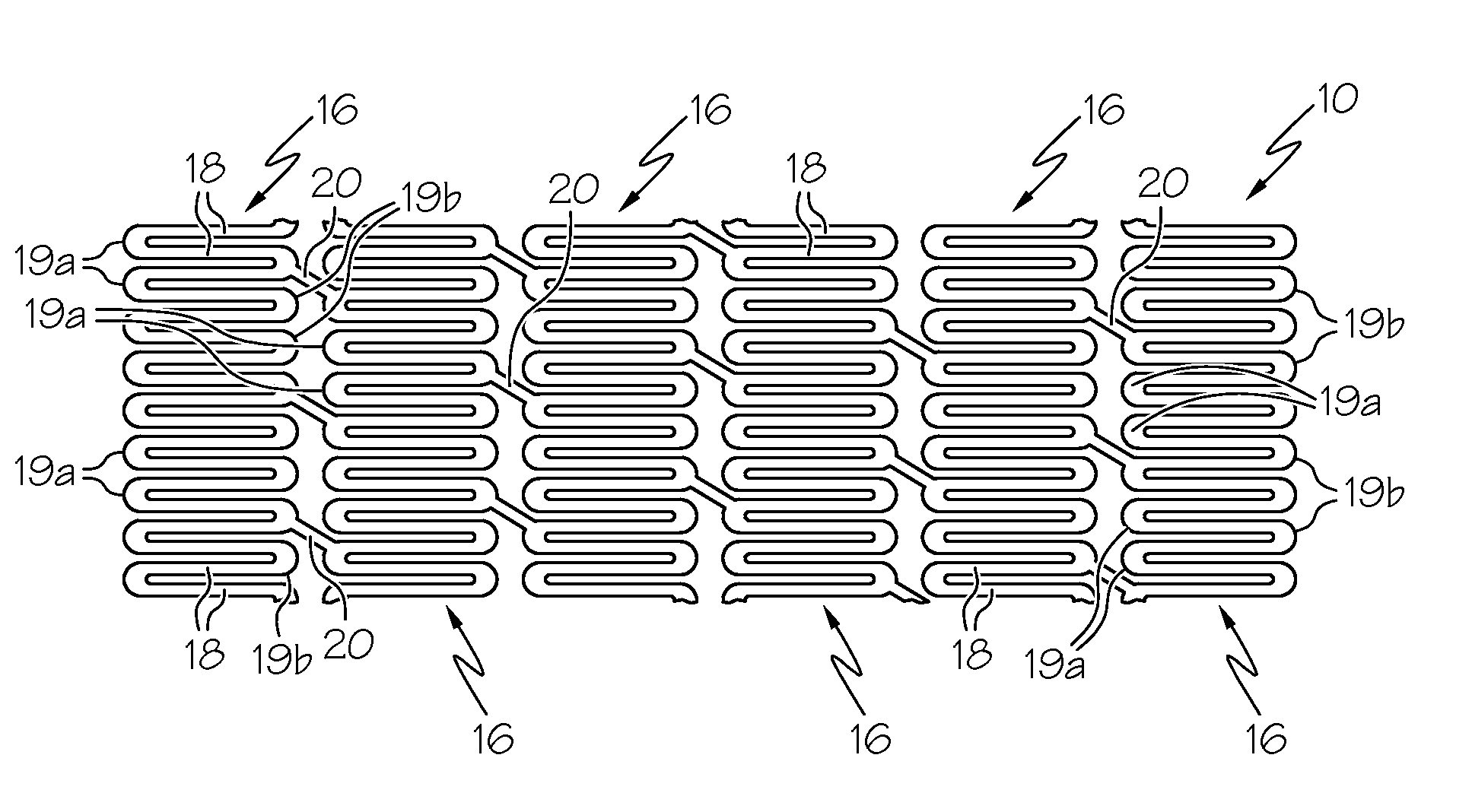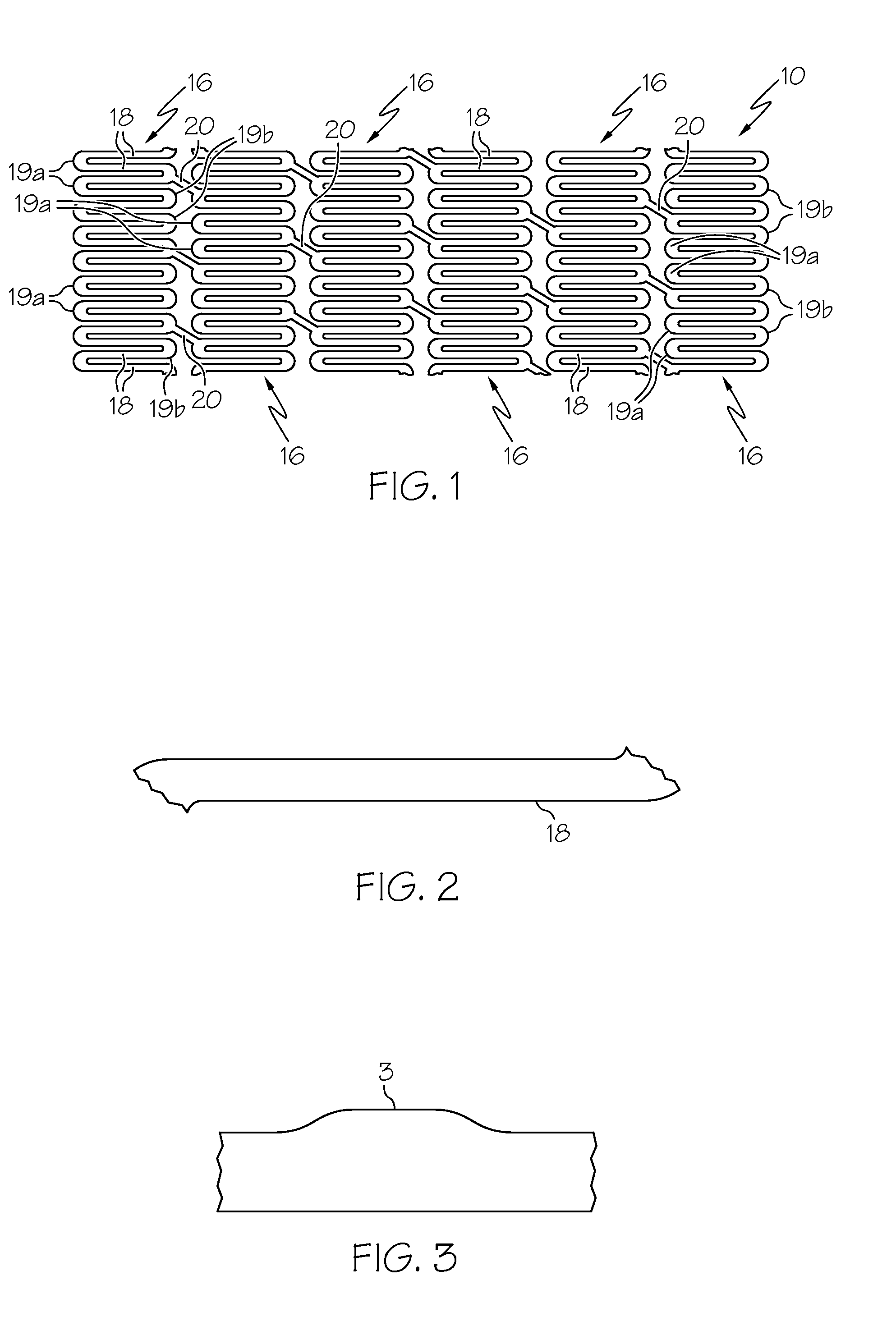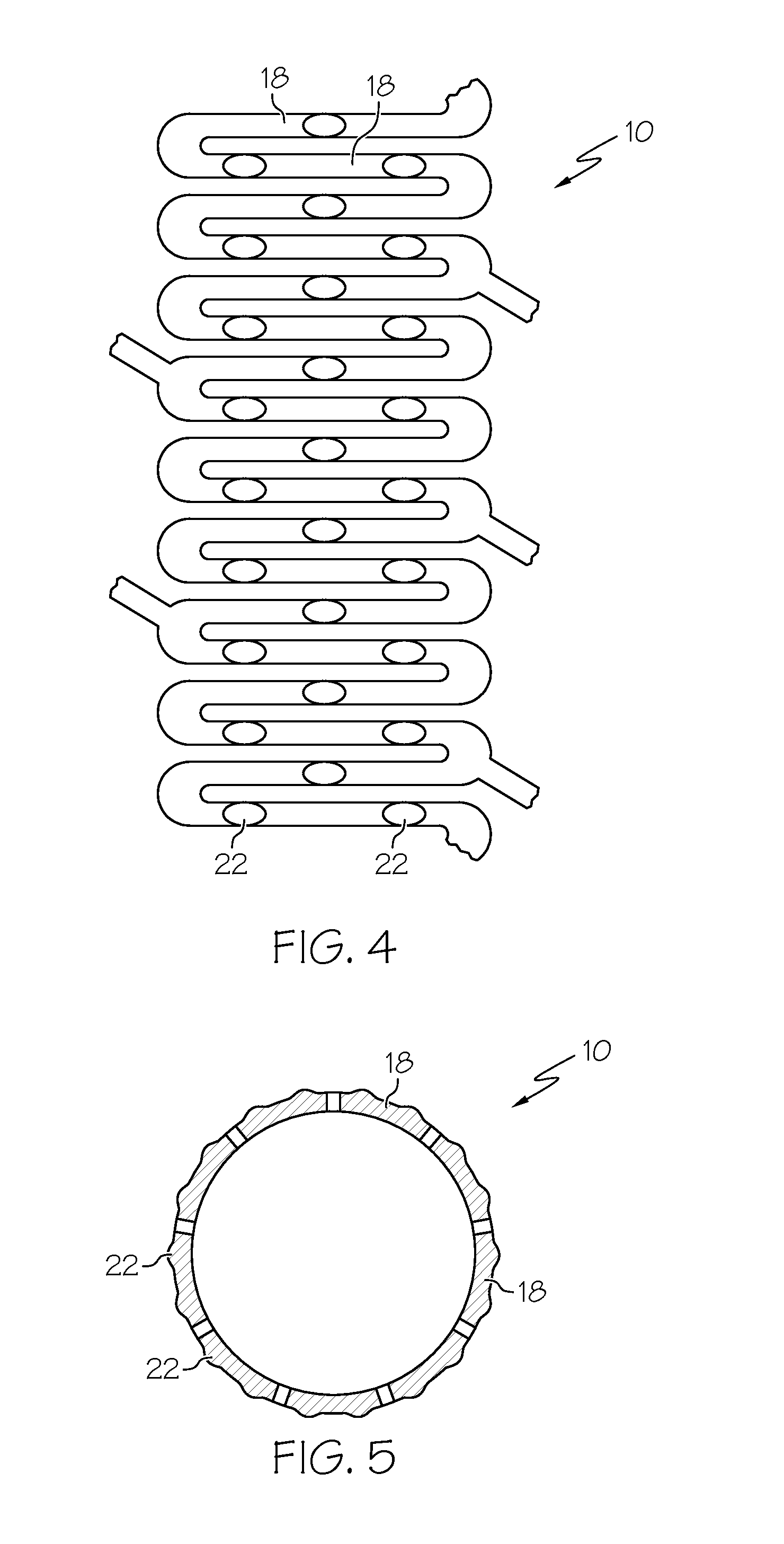Bioabsorbable stent having radiopacity
a bioabsorbable, metal stent technology, applied in the field of medical devices, can solve the problems of insufficient radiopacity of iron to allow thin-walled stents, render the stent not completely bioabsorbable as desired, and neointimal hyperplasia, so as to increase the radiopacity and increase the radiopacity of the bioabsorbable metal stent.
- Summary
- Abstract
- Description
- Claims
- Application Information
AI Technical Summary
Benefits of technology
Problems solved by technology
Method used
Image
Examples
Embodiment Construction
[0044]While embodiments of the present disclosure may take many forms, there are described in detail herein specific embodiments of the present disclosure. This description is an exemplification of the principles of the present disclosure and is not intended to limit the disclosure to the particular embodiments illustrated.
[0045]The present invention relates to bioabsorbable radially expandable stents. As used herein, bioabsorbable stents shall refer to those that can be advantageously eliminated from body lumens after a predetermined, clinically appropriate period of time, for example, after the traumatized tissues of the lumen have healed and a stent is no longer needed to maintain the integrity of the lumen. The conventional bioabsorbable materials from which such stents are made are selected to resorb or degrade over time, thereby eliminating the need for subsequent surgical procedures to remove the stent from the body lumen if problems arise.
[0046]Suitably, the bioabsorbable st...
PUM
| Property | Measurement | Unit |
|---|---|---|
| Length | aaaaa | aaaaa |
| Thickness | aaaaa | aaaaa |
| Width | aaaaa | aaaaa |
Abstract
Description
Claims
Application Information
 Login to View More
Login to View More - R&D Engineer
- R&D Manager
- IP Professional
- Industry Leading Data Capabilities
- Powerful AI technology
- Patent DNA Extraction
Browse by: Latest US Patents, China's latest patents, Technical Efficacy Thesaurus, Application Domain, Technology Topic, Popular Technical Reports.
© 2024 PatSnap. All rights reserved.Legal|Privacy policy|Modern Slavery Act Transparency Statement|Sitemap|About US| Contact US: help@patsnap.com










